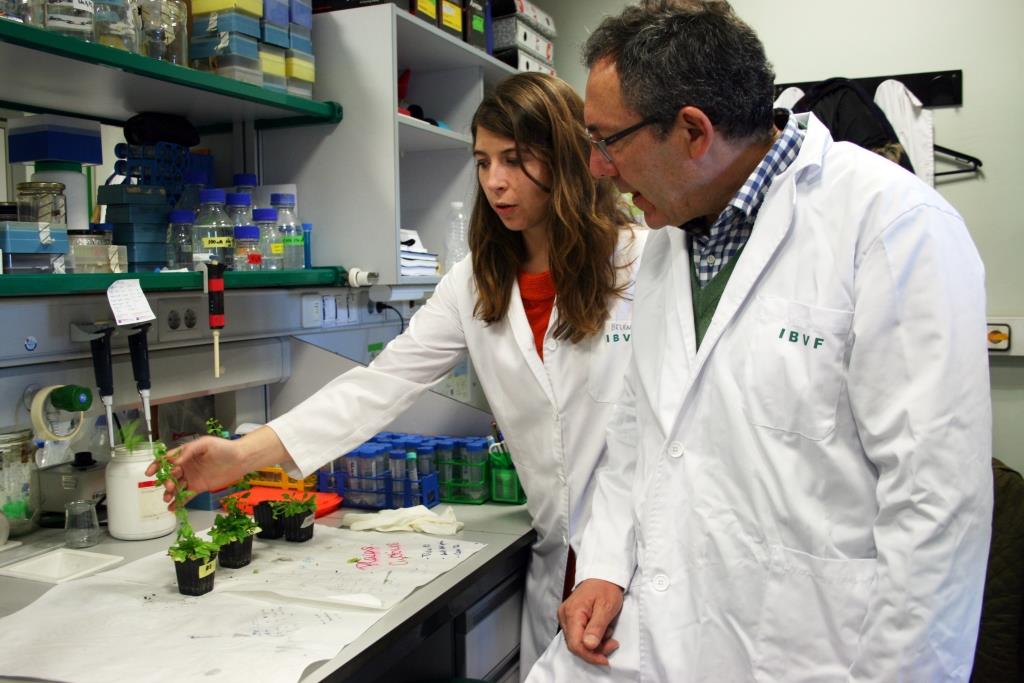Experts from the Institute of Plant Biochemistry and Photosynthesis, part of the Isla de la Cartuja Scientific Research Centre (CicCartuja) in Seville, are working on new strategies to increase the starch content in cereal seeds. Using genetic engineering, researchers have managed to increase the expression of the gene called Ntrc in these plants, which is involved in growth and photosynthesis.
This research group from the University of Seville discovered the Ntrc gene in plants in 2004 in rice seeds and has been working on its study ever since. They are currently developing several research projects with funding from the Ministry of Economy and Competitiveness (MINECO) and the Ministry of Excellence of the Andalusian Government, and have recently published several scientific articles in prestigious journals worldwide.
The Ntrc gene plays a crucial role in the system that regulates the harmonious growth of plants and in the control of the photosynthesis process at different stages of the day according to the changes in light that occur.
“Plants, like humans, grow in a coordinated manner. We don’t grow one leg more than the other or one ear comes out before the other. The same happens with plants, the roots grow in harmony with the rest of the organs and adapt to the constant changes in light that occur in the 24 hours that a day lasts to carry out photosynthesis,” explains the professor at the University of Seville and head of the Cereal Seed Biotechnology Research Group, Francisco Javier Cejudo, who adds that the latest results obtained also indicate that Ntrc also controls the appearance of secondary roots in the plant.
Applied research
The starch present in vegetables is the largest source of carbohydrates that humans feed on and obtaining seeds rich in this polysaccharide seems to be an achievable challenge thanks to science.
To do this, researchers carry out a multitude of tests in the laboratory, under strict safety conditions, until they manage to find the plant that meets the characteristics they are looking for. In this case, its seeds are rich in starch.
The studies are carried out with barley grains and a model cereal called Brachypodium, which is not currently consumed but could be used as livestock feed in the future because it is genetically similar to wheat and grows very quickly.
Using genetic engineering, researchers remove or add a gene to the plant and study its behaviour in relation to the unmodified species. This is what is known as transgenic organisms. Thanks to this technique, it is possible to obtain, for example, plants that are resistant to certain pathogens without the need to use pesticides, with the economic and environmental savings that this entails.
“As with all scientific and technological advances, at first there is a rejection due to fear of change, of the new, but I believe that the use of transgenics will gradually become established in society and legislation will gradually adapt. Man has been selecting species since the Neolithic, this is what is known as classical genetics, because 6,000 years ago, when humans went from being hunters to farmers in the first Green Revolution, the most resistant plants were already being chosen to cultivate and that is why the wheat or corn we consume today are very different from their original varieties,” says Professor Cejudo.
Bibliographic references:
Programmed cell death (PCD): an essential process of cereal seed development and germination: Frontiers in Plant Science. http://journal.frontiersin.org/Journal/10.3389/fpls.2014.00366/full
NADPH Thioredoxin Reductase C is localized in Plastids of Photosynthetic and Non-photosynthetic Tissues and is involved in lateral root formation in Arabidopsis thaliana. Plant Cell. 2012 Apr;24(4):1534-48. doi: 10.1105/tpc.111.092304. Epub 2012 Apr 13.
Source: Scientific Culture and Innovation Unit (UCC+i) of the University of Seville




